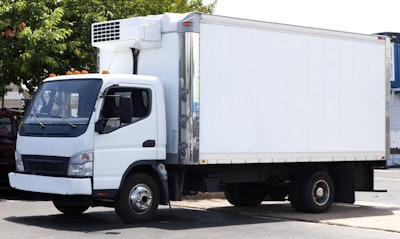
Many food products travel through a refrigerated supply chain from the manufacturer’s facility before arriving at a retail location. Inherently, the cold chain distribution network is more expensive and has a higher environmental impact because of the energy consumed to create a cooler atmosphere and special transportation needs. A unique scenario was recently presented to the Smithers Pira package and distribution testing laboratory in Lansing, Mich.
When faced with the decision to invest in new refrigerated transportation for a food product, a major food manufacturer had to evaluate the supply chain system that was originally put in place to determine whether it was necessary moving forward. Historically, refrigerated transportation was utilized from the manufacturing facility to an internal distribution center. Transportation from the internal distribution center to retail shelf was via non-refrigerated trucks.
The Challenge
The food product manufacturer, which recently acquired the product, did not have a cold chain distribution network in place. As this product was new to the portfolio and was historically shipped through a refrigerated distribution network, the manufacturer wanted to understand the implications of potentially shipping it through a non-refrigerated supply chain. Purchasing refrigerated trucks and creating a cold chain distribution center would require a multi-million dollar investment. At the same time, it would be inherently risky to ship the food product through its non-refrigerated supply chain, and chance that the product could arrive cracked, smudged or blooming on a retailer shelf.
Very limited data was available to substantiate the claim that the refrigerated supply chain extended the shelf life of the product. In addition, no data was available to determine what shipping hazards could cause a reduction in shelf life.
The manufacturer sought assistance from the Smithers Pira laboratory to determine if the cold chain distribution investment was necessary to preserve the integrity of the food product.
Testing
At the Smithers Pira lab, the product was tested within the temperature cycles of the company’s internal supply chain network. Data was collected analyzing how temperatures varying from ambient conditions of 23°C (73°F) up to elevated temperatures of 49°C (120°F) affected the product. By varying the pre-conditioning environment, an atmospheric factor was defined.
The International Safe Transit Association (ISTA) 3H Steel Spring Truck Random Vibration Profile was used to estimate travel conditions and impact. An industry-standard time compression formula was utilized based on the food product’s packaging format. A minimum threshold was determined by reversing the compression formula back to the original recorded level.
With the temperature and transportation factors established independently, the next step was to combine them to simulate the supply chain.
A thermal structure was constructed to encase the food product and placed on a random vibration table to simulate shipping and transportation conditions. A simulation work program was developed to combine the temperature cycling based on collected data and the vibration segments base on the ISTA 3H Steel Spring Truck profile.
The product was then inspected for any damage or impact, such as cracking, smudging or blooming.
The Result
Through the lab testing protocols for temperature and transportation, it was determined that product quality was not affected by the lack of a refrigerated segment in the supply chain. The product was able to withstand the combined temperature cycling and vibration without adverse effects.
The laboratory testing was completed in less than 20 business days and provided the manufacturer with the confidence to move forward on a non-refrigerated basis. As a result, the client was able to avoid millions of dollars of expense on unneeded distribution supply chain modifications.
While real-life testing by shipping this product across the country in a non-refrigerated supply chain may seem to be the simplest way to evaluate package integrity, a standard or custom test protocol can often be more efficient and produce significant benefits, such as a shorter testing period, faster go-to-market timeline and a reduction in unsellable products.
Utilizing the laboratory-testing environment, the manufacturer found a cost-effective, timesaving and, ultimately, more environmentally friendly supply chain solution.














![Pros To Know 2026 [color]](https://img.sdcexec.com/mindful/acbm/workspaces/default/uploads/2025/08/prostoknow-2026-color.mduFvhpgMk.png?ar=16%3A9&auto=format%2Ccompress&bg=fff&fill-color=fff&fit=fill&h=135&q=70&w=240)



